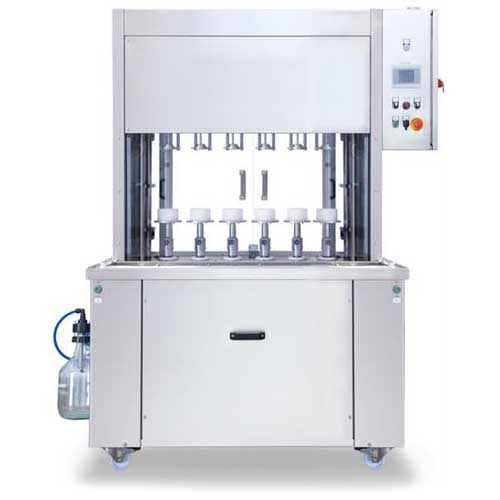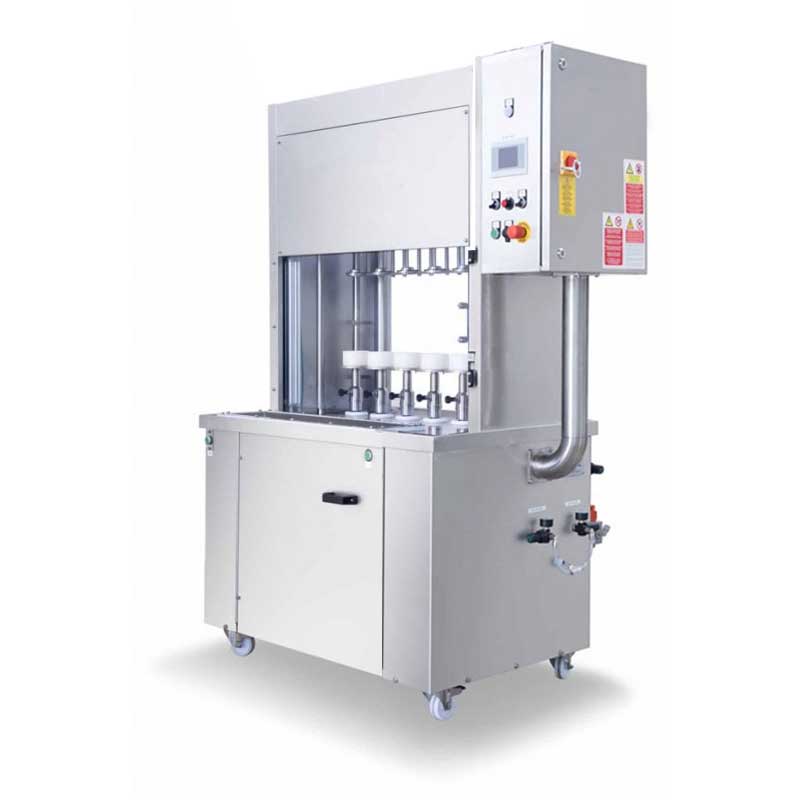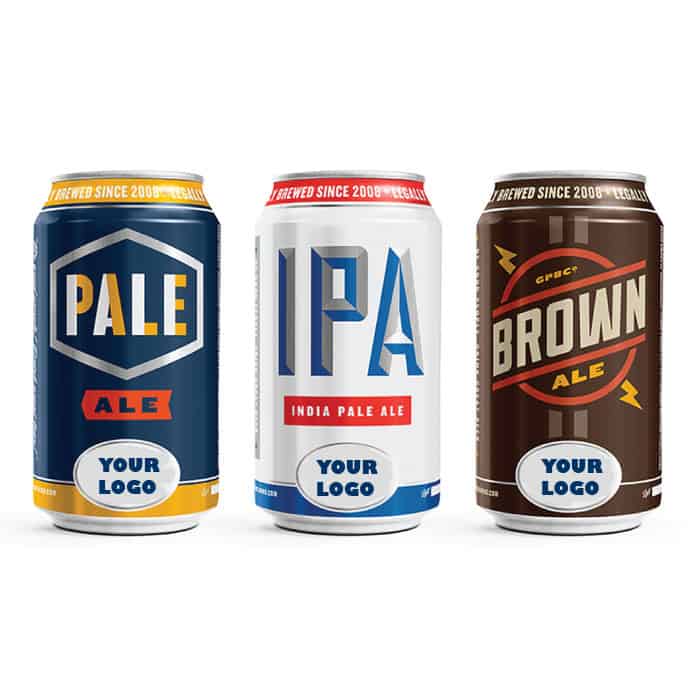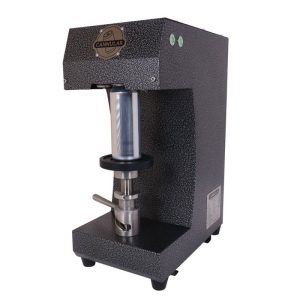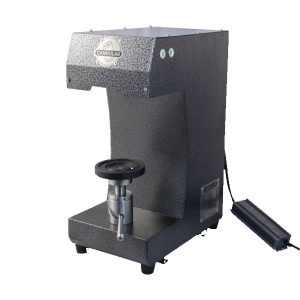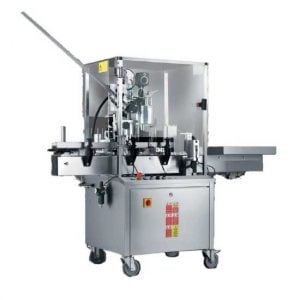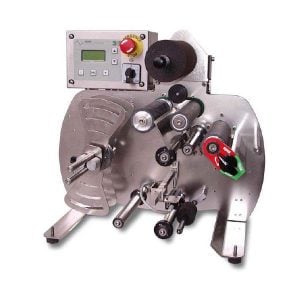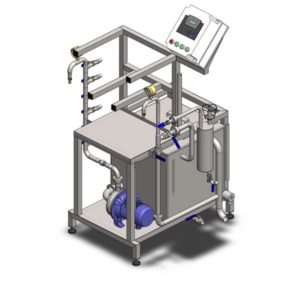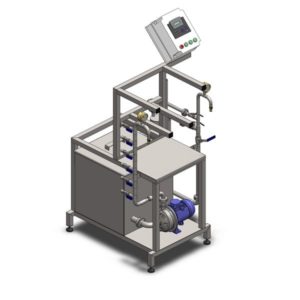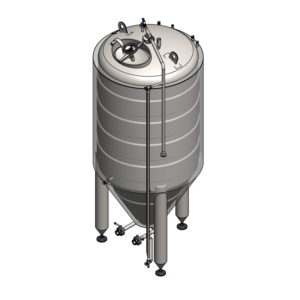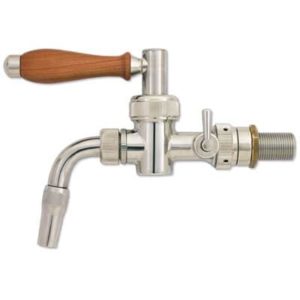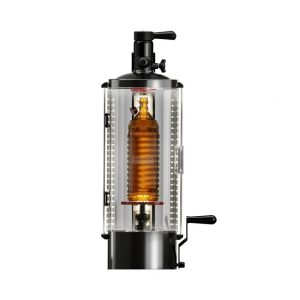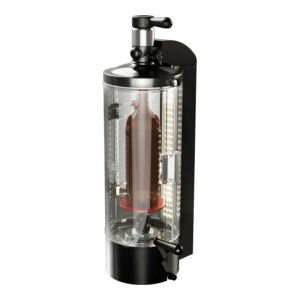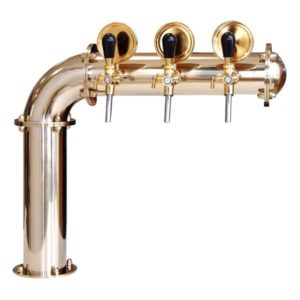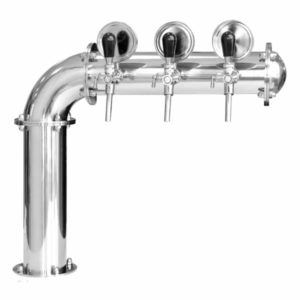Description
The monoblock CFSA-MB66 is a counter-pressure semiautomatic rinsing and filling machine for cans with two integrated and one external units :
- Rinsing unit : semi-automatic rinsing the aluminium cans – 6 electronic valves
- Filling unit : counter-pressure isobaric filling the aluminium cans – 6 electronic valves
- External capping unit (the can seaming machine) – optionally
Operation speed : from 400 up to 600 cans per hour (depending on the operator, product, temperature, foamicity, pressure)
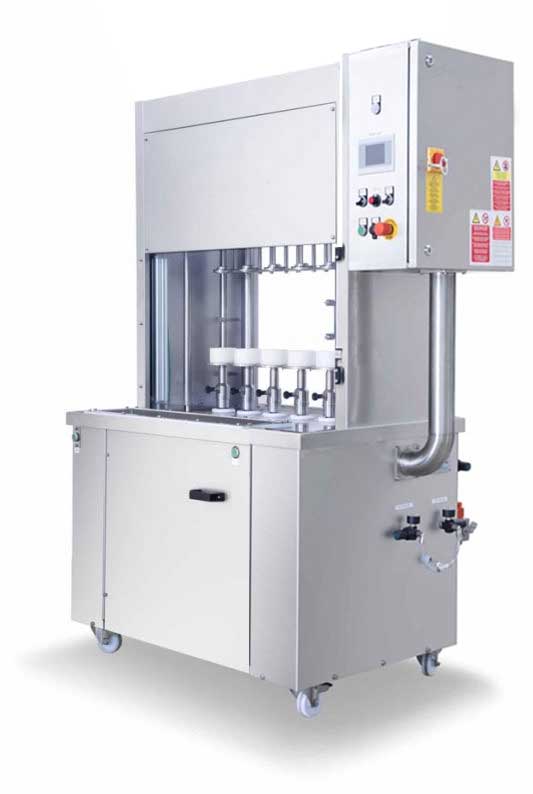
Technical parameters
| Maximal operation capacity | from 400 up to 600 cans per hour (depending on the operator, product, temperature, foamicity, pressure) |
| Number of : rinsing valves/filling valves/capping heads | 6 + 6 (+1) |
| Height of the worktable | 750 cm |
| Max. cans size : diameter / height | 70mm /150mm |
| Power connection | 220-240V / 50 Hz / single phase |
| Electrical consumption | 0.37 kW |
| Max filler tank pressure | 5 bar/72 psi(tested on 9 bar/130 psi ) |
| Compressed air consumption | 180 lt/min (6 bar) |
| Beverage product pipe connection | DIN 32676 TRICLAMP D=51mm (other types on request) |
| Co2/Nitrogen connection | John Guest 8mm or Female G 3/8” gas |
| Compressed air connection | John Guest 8mm or Female G 3/8” gas |
| Beverage temperature | 0-2°C (recommended to avoid foaming) |
| Maximum rinsing temperature | 60°C / 140°F (on request 85°C / 185°F) |
| Filler tank material | AISI 304 (filling valves AISI 316) |
| Beverage products | Beer, sparkling water, wine, soft drinks, non-carbonated beverages |
| Cans type | all types (defined by customer) – only with the upgrade kit for filling cans |
| Dissolved oxygen level | 40-60 PPB (in the cans after filling and capping) |
Description :
Structure of the machine:
Painted steel frame covered with stainless steel plates.
Machine on 4 lockable wheels for easy moving of the filler-block in client’s factory.
This machine has been designed to assist in filling carbonated or non-carbonated beverages into aluminium cans. Two phases of the can filling process in one compact block with a steel base on wheels : rinsing + filling.
Recommended to use witn an external can capping unit (the can seamer)
1st section : Can rinsing unit – equipment to rinsing the cans with pure water or with a chemical sterilizing solution
Easy cleanable stainless steel base with recessed working area to prevent product and water spillage. Safe spray activation system – if a can is not inserted then the spray nozzle is not active.
- Six rinsing positions
- Rinsing six cans in the same time (in standard)
- 1st rinsing cycle (in standard) : one-way water
- 2nd rinsing cycle (only with optional equipment) : recirculating solution (for example alkaline sanitizing solution)
- 3nd rinsing cycle (only with optional equipment) : one-way water (for example sterile water)
- 4rd rinsing cycle (only with optional equipment) : recirculating solution (for example sterilizing solution based on alcohol)
- 5th rinsing cycle (only with optinal equipment) : sterile air (drying the cans)
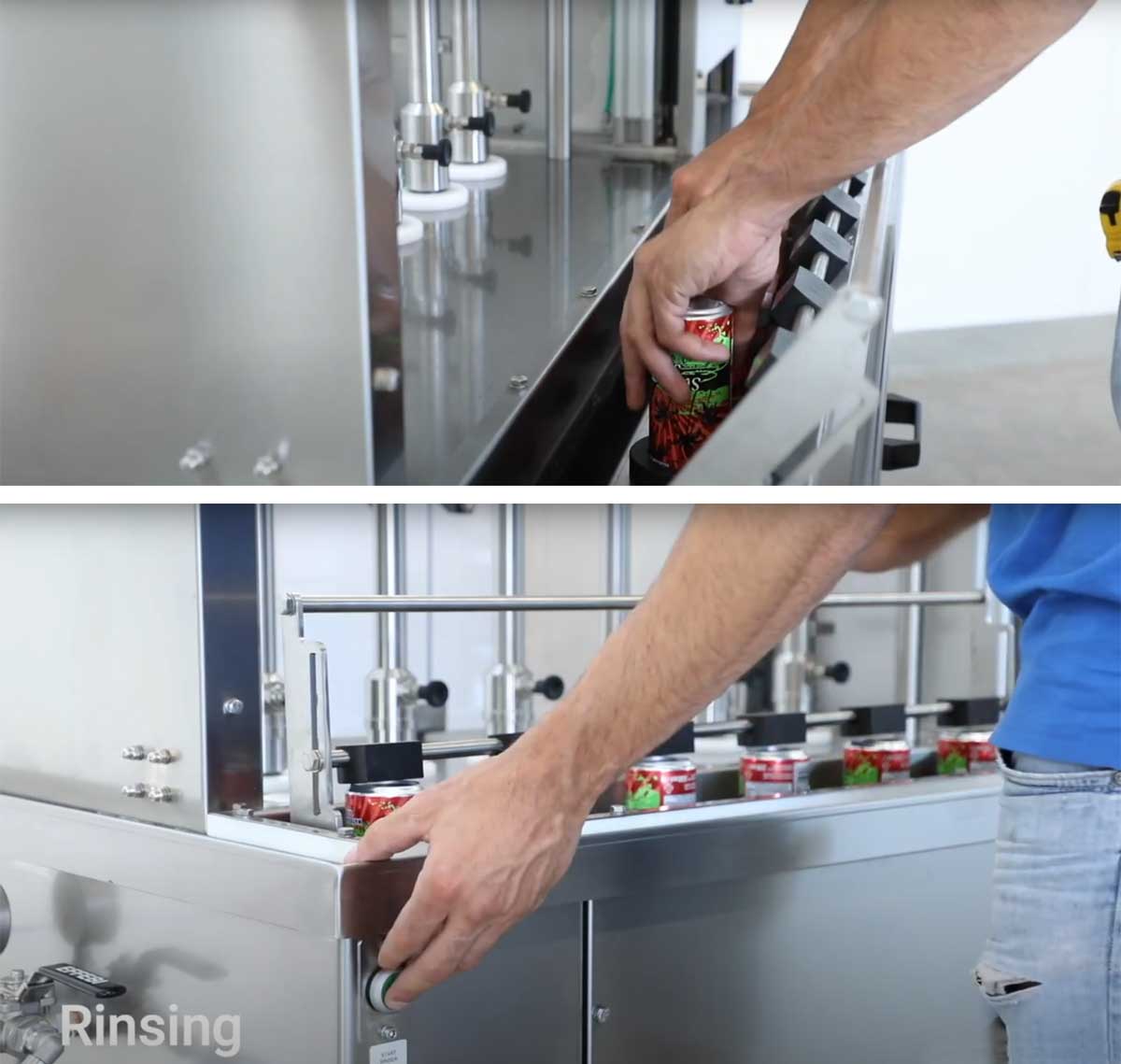
2nd section : Can filling unit – equipment to filling beverage into the cans (counterpressure filler)
- Six filling positions
- Isobaric filling of carbonated beverage into six cans in the same time (in standard)
- Gravity filling of non-carbonated beverage into six cans in the same time (in standard)
- Filling beverages into aluminium cans (in standard)
- The filling process takes place automatically, the operator only has to place all the cans on the supports and remove them in the end of the process
- Pre-evacuation (only with optional equipment) : First the single or double pre-evacuation of oxygen is carried out inside the empty cans, by means of an external vacuum pump
- The second pre-evacuation of oxygen is preceded by a CO2 injection, in order to lift the rest of oxygen to the upper part of the cans.
- This system guarantees an excellent result in terms of dissolved oxygen – less than 28 PPB is reached in beverage in the cans.
- Injecton of carbon dioxide into high space of the cans prior to closing to remove residual oxygen in the can head space.
- At the end of the can filling process, the pressure compensation occurs between the can and the isobaric tank, and the beverage flowes up to the level of the level devices.
- The type of deflector installed determines the correct flow while measures a level through the walls of the can.
- The level of product inside the cans is determined by the interchangeable devices depending on the capacity of the can and the level height required.
- In the last phase, the cans are de-pressurized, controlled by an opening and closing timer in order to gently release the pressure and avoid extremely foaming.
- The controlled creation of a foam avoid entering of the oxygen in the cans before they are closed.
- By modifying the depressurization times, the operator can set more or less foam.
Filling the aluminium cans
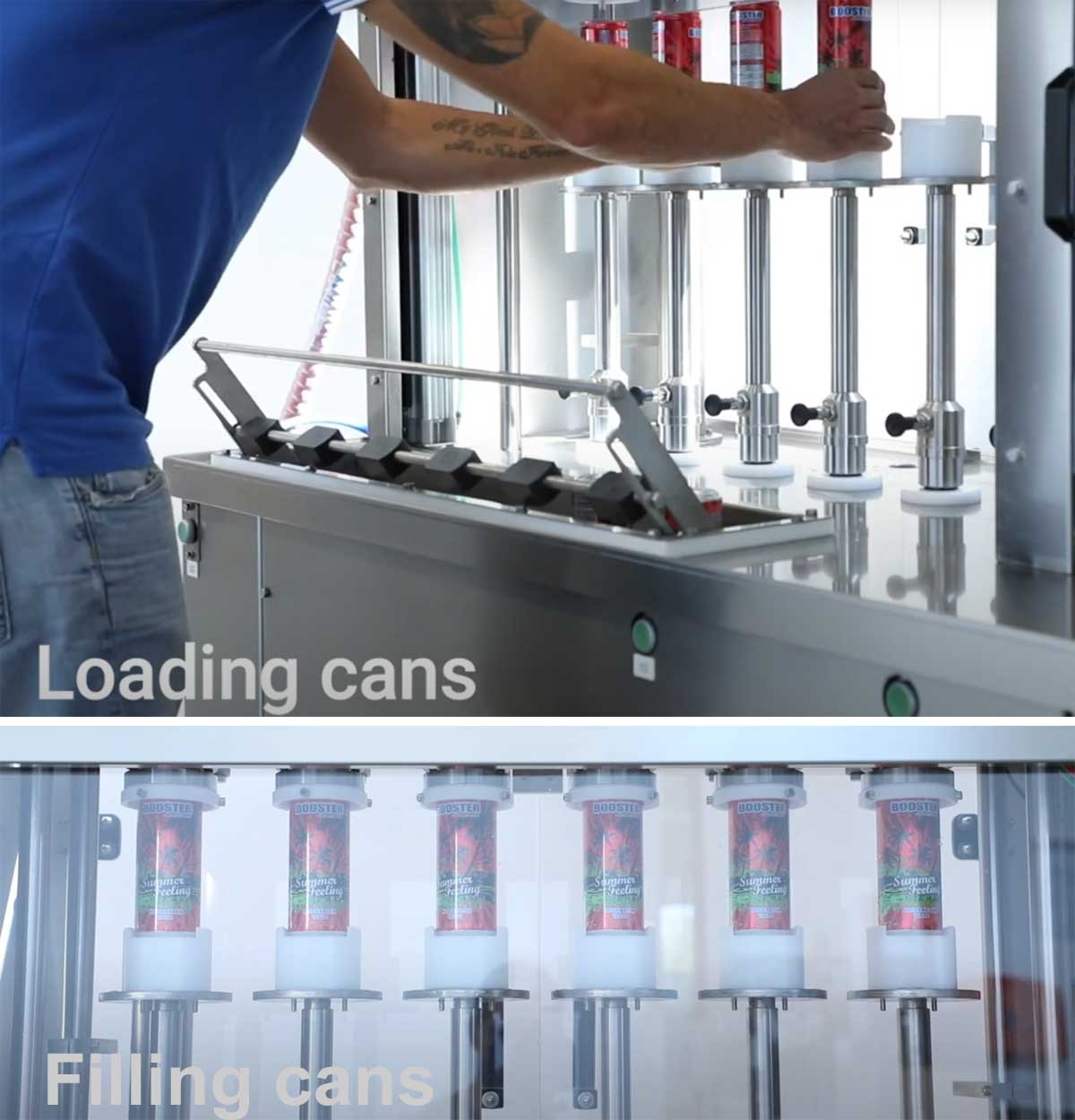
3rd section : Can capping unit – equipment to capping the cans with aluminium lids (can seamer)
- External can capping machine
- Closing the cans with aluminium lids
CSM-SA1 : CANNULAR PRO – the compact semi-automatic can seamer (for the smallest breweries)
The Cannular Pro is one of the most compact and easy to use benchtop can closure machines around. A single operator can seam/seal the cans in under 5 seconds meaning this compact machine is suitable for small breweries or brewpubs doing small production runs.
Attention : This machine is not suitable with the B64 can ends.
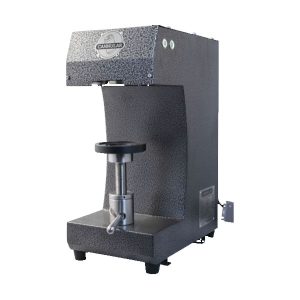
CSM-SA3 : ProKAN – the compact semi-automatic can seamer (for professional use in small breweries)
The ProKAN is the smallest and lightest automatic can seaming machine in the world designed for professional use in the beverage industry. Fully automatic seaming function for can sizes: CDL/B64 200, 200S, 250, 250S, 330, 375, 500, 550 a 1000 ml.
Fully automatic seaming function for can sizes: CDL/B64 200, 200S, 250, 250S, 330, 375, 500, 550 a 1000 ml
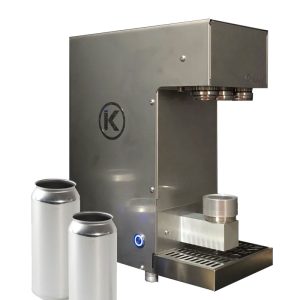
Capping the aluminium cans
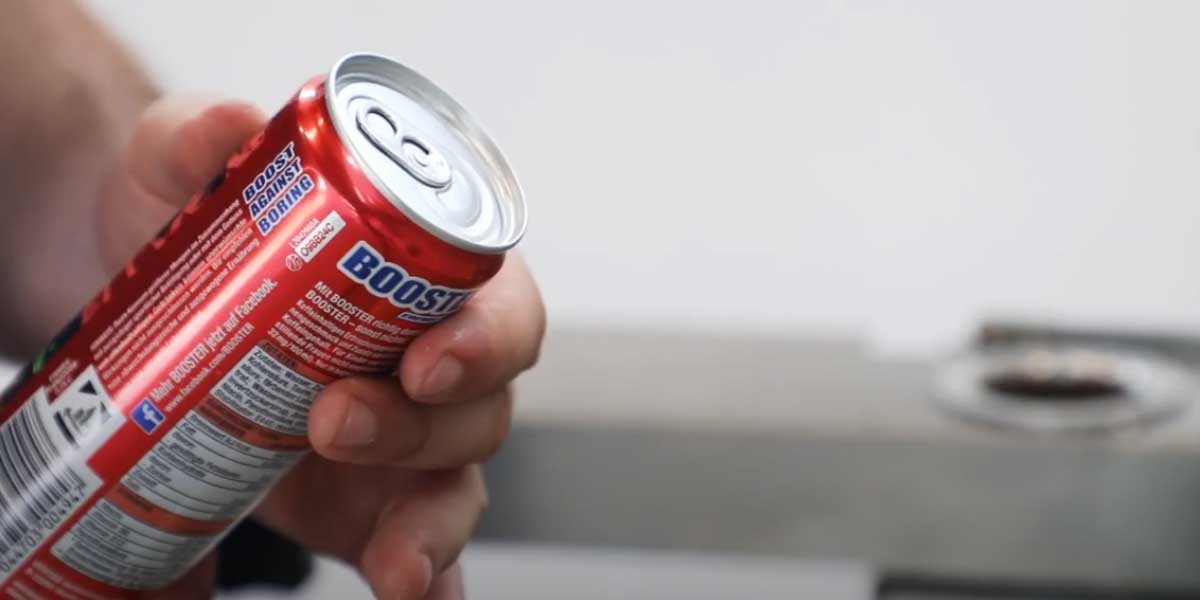
HMI colour control panel for easy management of all controls of the machine
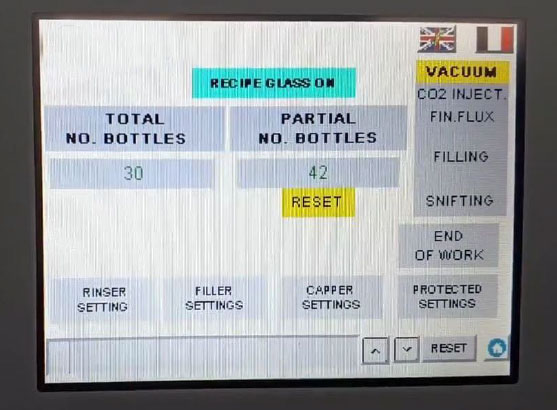
Vacuum pump and accessories for pre-evacuation the aluminium cans :
Glass vessel on side of the filler serves to prevent flooding of the vacuum pump
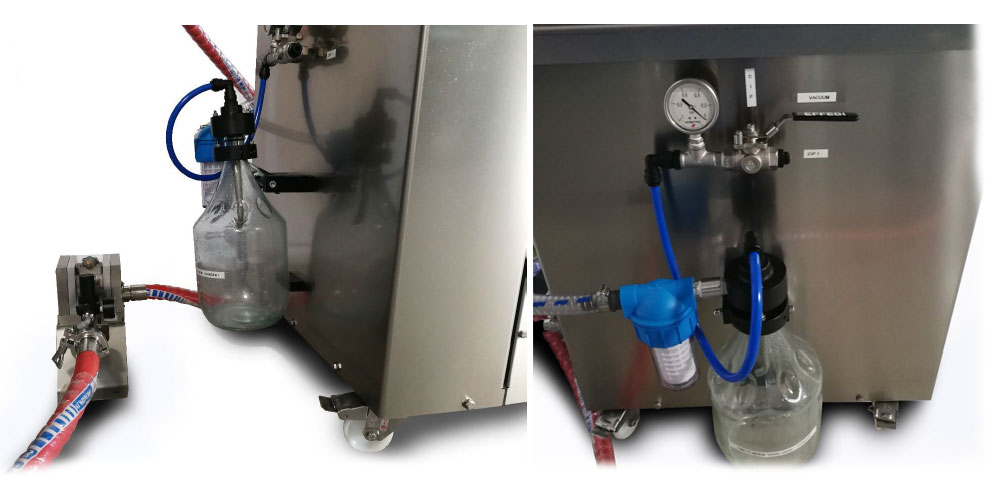
External tank for 20 liter of the chemical solution for CIP cleaning the cans :
Rinser recilcuation 20 liters tank with the pump, filter and paracetic sterile water solution (optionally) :
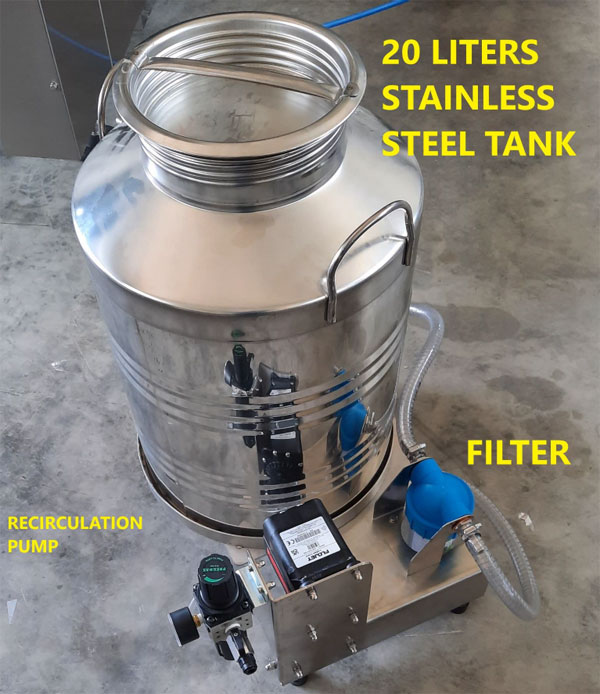
CIP set with stainless steel product recovery tank, filter, all CIP connections and piping
Stainless steel CIP bottle with a manifold for distribution the sanitizing solution to all valves :
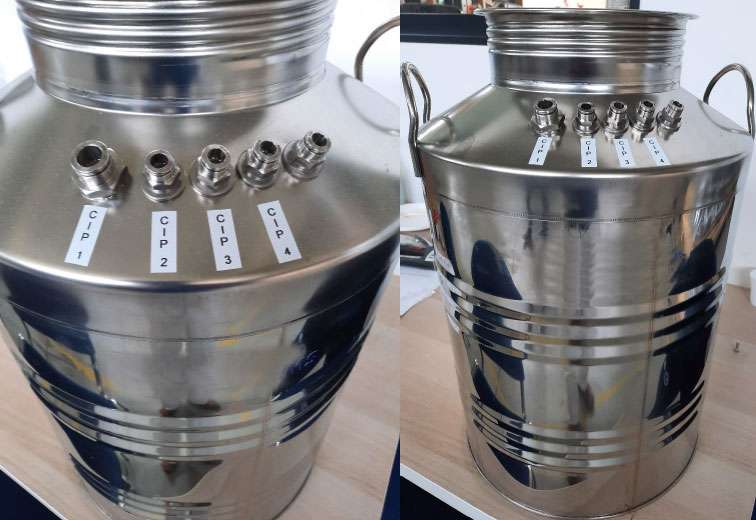
Pneumatic product feeding pump :
Stainless steel pneumatic diaphragm product feeding pump (necessary also for all carbonated products) :
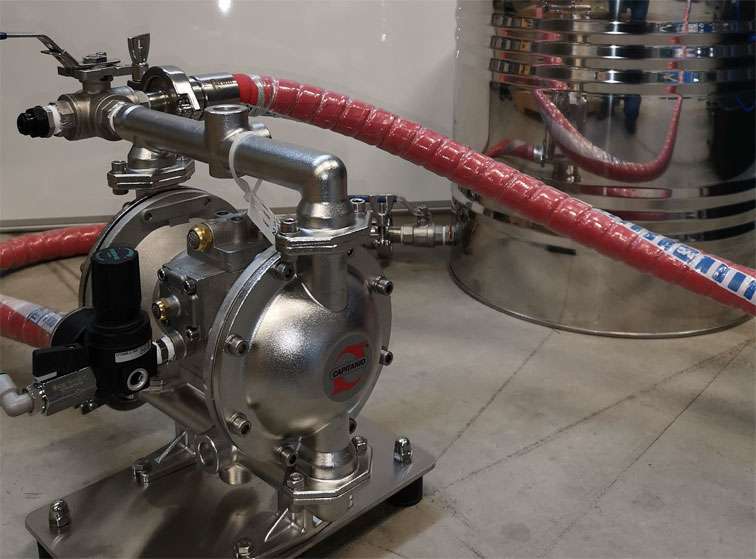
CIP dummy cans (optionally) :
This CIP dummy cans allows high pressure chemical cleaning of the filler on-board tank and filling valves in continuous motion to ensure high quality cleaning and achieve absolutely sterile all parts in contact with a beverage.
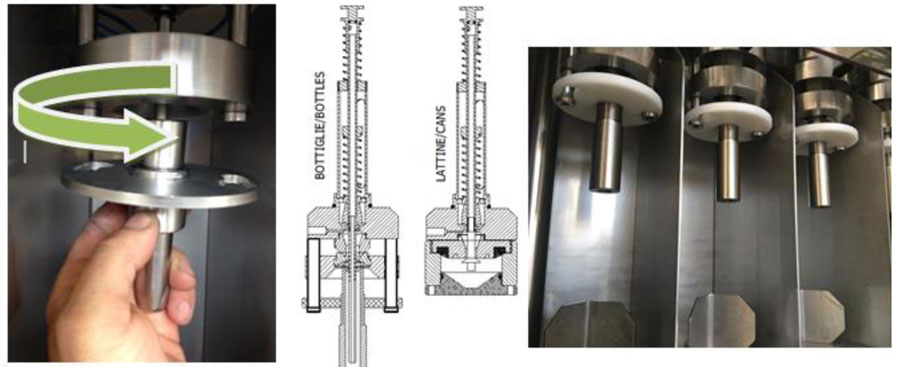

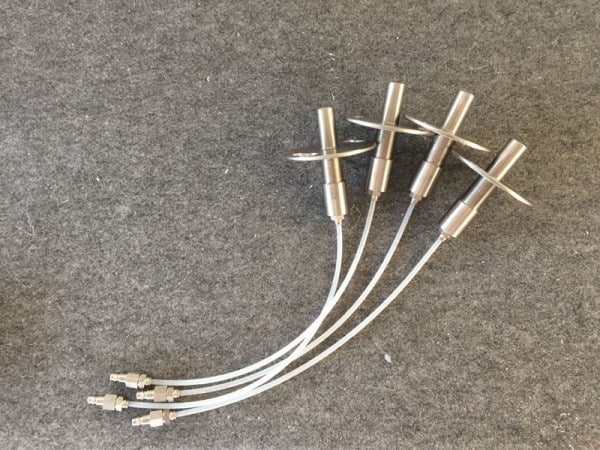
Connections :
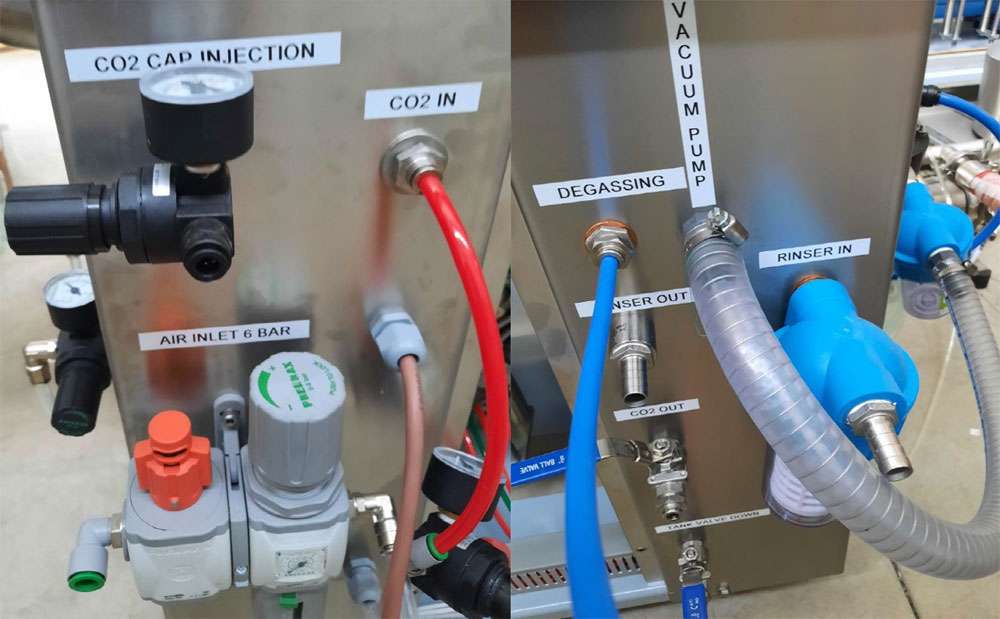
Operating cycle description :
- Rinse the isobaric tank with ice water to reduce the temperature in the tank and to achieve reduce foaming of beverage.
- Fill the source tank with a beverage intended to be filled into the cans.
- Remove the air from the tank by carbon dioxide.
- Place the cans in the rinsing positions.
- Activate the can rinsing process by a switch on the PLC control panel.
- Place the cans on the filling positions
- The machine is then activated by means of pressing two buttons simultaneously
- The safety door comes down automatically (they are pneumatically driven)
- The cans are lifted automatically under the filling valves
- The vacuum system sucks air out of the can
- The machine fills the can with fresh carbon dioxide from the CO² pressure bottle (not from the filling tank)
- The vacuum system sucks air out of the can
- The machine fills the can with carbon dioxide from the header tank
- The machine achieves stability of pressure and starts filling the beverage into the can
- The machine snifts the fill level gently (in three micro-impulses) as to prevent foaming
- The cans lower down from the valve to the rest position
- The safety door opens automatically and the cans are removed manually and transferred to the capping unit
- Activate the can capping process by a pushing the can holder in the capping machine
- The can is closed with aluminium caps automatically using an automatic seaming head.
- Remove the can out from the capping machine.
Main features of the new model :
Hugely improved design with many new and enhanced features including :
- Faster filling cycle
- Higher quality of vacuum for oxygen retention – the highest possible level in the beverage industry
- Oxygen TPO (Total Pickup of Oxygen) values between 40-60 ppb
- User friendly HMI 3 inch touchscreen control panel
- Easy clean stainless-steel base with recessed working area to avoid product spillage
- Total control of fill cycle (pre-evacuation, CO² injection, filling, degassing) through interactive touch screen 3” control panel
- IoT Smart Device: Full internet connection optionally available for remote technical diagnosis and assistance
- Glass vacuum tank to ensure visual monitoring of correct operating statuses
- Easy access from rear via transparent opening doors for easy maintenance of the machine
- Possibility to fill low cans
- Rinser with system : “No cans – no spraying”
- Flexibility to fill any size of the aluminium cans
Pricelist of the CFSA-MB66 : Monoblock 6-6 (with six rinsing-filling valves)
Standard equipment (rinsing-filling unit) :
| Code | Description | Price (€ Euro) |
| CFMB66 | Monoblock Semi-automatic 6-6 : rinsing unit (6 positions), filling unit (6 positions) for aluminium cans | On demand |
| 0912 | CIP dummy cans (6 pcs) – special accessory for continuous chemical cleaning all 6 filling valves simultaneously | On demand |
| 862 | Automatically sliding door to operator protection on the filling unit | On demand |
| 866 | Automatic cycling for pre-evacuation the cans, CO² flushing, counterpressure filling and degassing control with the 3 inch touch control panel | On demand |
| HTK | High temperature CIP washing kit (for cleaning with hot caustic solution at 85°C) | On demand |
| 863 | Injection of CO² into the cans before the filling | On demand |
| 976 | System for recirculation of the rinse chemicals in a closed circuit with a pump and filter – to rinse the cans with peracetic solution | On demand |
| 974-304 | Pneumatic diaphragm pump AISI 304 with switch valve TriClamp 1″ and the connection kit to join the filler to pump, all connections to the CIP unit. | On demand |
| CTK | CIP tank 50 litres AISI304 with all connections to the filling unit | On demand |
| 882 | Non-return valve with TriClamp 1 inch connections | On demand |
| Total EXW price (minimal configuration) |
On demand |
Optional equipment (for the can rinsing-filling unit) :
Items marked ** are highly suggested
| Code | Description | Price (€ Euro) |
| 859 | Set of all exchange parts to use the filler with another size of the cans with the same lid (one set in in the basic price) | On demand |
| 858 | ** Injection of hot water into the cans prior to capping – it causes a release of CO², preventing air from entering the cans when manually transferring the cans to the capping unit | On demand |
| 856 | Additional filling nozzles for different fill levels of beverage products (6 pcs). Each can format requires its own set. | On demand |
| 316LP | All construction parts in contact with the beverage product made of AISI 316 (necessary for cider) | On demand |
| 974-316 | Pneumatic diaphragm pump AISI 316 with switch valve TriClamp 1″ and the connection kit to join the filler to pump, all connections to the CIP unit (required for cider/juice filling) | On demand |
| 884 | ** Complete set of replaceable gaskets for all filling valves (6pcs) | On demand |
| 889 | ** Tool for quick change over the valve gaskets | On demand |
| 962 | Special voltage and frequency (different from EU standard 1x 230V/50Hz) – for example 1x 110V /60Hz without certificate | On demand |
| 962C | Special voltage (different from EU standard 1x 230V/50Hz) – for example 1x 110V /60Hz including the UL conformity electronic parts (needed for American market) | On demand |
| ETRAK | ** ETH Remote assistance set – Communication set of hardware and software allowing remote assistance, diagnostics and adjusting if a technical problem occurs – via the cable Ethernet connection | On demand |
| WFRAK | WIFI Remote assistance set – Communication set of hardware and software allowing remote assistance, diagnostics and adjusting if a technical problem occurs – via the WiFi connection | On demand |
| Total price of recommended optional equipment (marked **) | On demand |
Capping unit (seamer) :
Items marked ** are highly suggested
| Price (€ Euro) | ||
| Standard equipment (seamer) : |
||
| CSCAP |
CSM-SA1 : CANNULAR PRO – the compact semi-automatic can seamer (for the smallest breweries)The Cannular Pro is one of the most compact and easy to use benchtop can closure machines around. A single operator can seam/seal the cans in under 5 seconds meaning this compact machine is suitable for small breweries or brewpubs doing small production runs. Attention : This machine is not suitable with the B64 can ends.
|
On demand |
| CSUNT |
CSM-SA3 : ProKAN – the compact semi-automatic can seamer (for professional use in small breweries)The ProKAN is the smallest and lightest automatic can seaming machine in the world designed for professional use in the beverage industry. Fully automatic seaming function for can sizes: CDL/B64 200, 200S, 250, 250S, 330, 375, 500, 550 a 1000 ml. Fully automatic seaming function for can sizes: CDL/B64 200, 200S, 250, 250S, 330, 375, 500, 550 a 1000 ml
|
On demand |
Prices of the minimal and recommended configurations :
| Minimal configuration for filling beverages into aluminium cans (can rinsing-filling unit + CannularPro) |
On demand |
| Standard configuration for filling beverages into aluminium cans (can rinsing-filling unit + ProKAN CanSeamizer) | On demand |
| Recommended configuration for filling beverages into aluminium cans (can rinsing-filling unit + ProKAN CanSeamizer + optional items marked **) | On demand |
Optional services :
| Code | Description | Price (€ Euro) |
| PCKEU | Packing costs EU – wooden crate (normal, transport to EU area – only continental countries) | On demand |
| PCKWD | Packing costs World – wooden crate with chemical protection for transport over sea | On demand |
| PCKSP | Packing costs Special – wooden crate when more devices will be packaged | On demand |
| SHP | Shipping cost | On demand |
| INS | Installation work and other services provided by our specialist on the place (price does not include hotel/dinner/lounch and travel expenses) | On demand |
Semi-automatic control system :

Description :
- Start of choosed cycle
- Emergency stop button
- Programmable unit with a display
Automatic cycles (see optional equipment table) facilitates all the operations of the can rinsing, filling steps and capping. You can choose different types of the filling process.
Available modes and their settings
I. Can rinsing mode :
- Injection timer – editable timing of the automatic valves
II. Can filling mode :
- Standard
- Single pre evacuation with CO2 injection timer adjustable
- Double pre evacuation with double CO2 injection timer adjustable
- CO2 purge for remove the oxygen in the bottles before the capping cycle
- You can change the time of the pre-evacuation, time of CO2 injection, time of the degassing
III. CIP mode :
- Opening all valves for the cleaning and sanitizing the machine
IV. Degassing mode :
- Opening and closing the valves when decompressing according on timer setting in two or more steps.
Optional services :
I. Installation work on the place …. price on demand

The price is valid for all countries of the European Union. The price includes five days work (+ two days travelling) of two specialists on the place – assembling and start up of the equipment.
The price does not include : transports costs and accomodation of the workers. Will becalculated individualy.
II. Installation work ensured by customer (with our remote assistance) …. price on demand
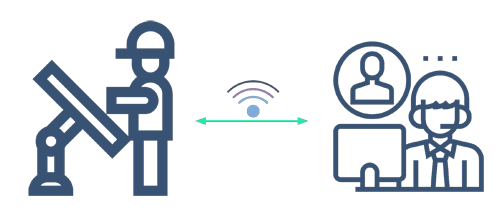
Do you want to save your money ? Are you technically skilled and not afraid of challenges? Do your country’s hygienic restrictive regulations not allow a visit of a specialized technician from a foreign country? Don’t be afraid to use the remote assistance service.
How is the installation of the filling line by our customer, using our remote assistance?
1.) The customer positiones all the machines and connects them to power guided by our checklist.
2.) Once photos were sent of the completion of the preliminary phase we proceeds with the start up and commissioning.
3.) First we connects the PLC of the machine via internet to our service console in our factory — this allows our service manager to view and control your PLC on a remote screen, as if he was in front of the machine in person.
4.) We then organise a Microsoft Teams conference call, with one your worker holding the camera, and the others working around the our technician´s instructions.
5.) After only 3-5 days setting up and configuring, first full aluminium cans will leave your filling line.

